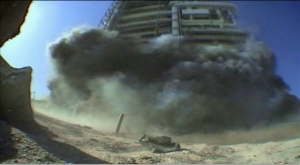Argh! The Film Factory 3D Indie Rig we purchased for our B cam system to shoot our first 3D documentary has arrived and the Canon 7D DSLRs don’t work with it!
Here’s the problem: beam splitter rigs are extremely sensitive – anyone who works with them has undoubtedly discovered that you have to have perfect alignment of the two cameras to each other, and to the mirror.
To make sure they’re aligned, we need to use a 3D monitor – so we can see both cameras on the same grid.
The model we’ve purchased (and as far as I can tell the only one that fits our field requirements, tech demands and budget) – the Transvideo Cineform 3D Monitor – takes an HDSDI signal from both cameras and combines them.
The Canon 7Ds aren’t built to send this signal … so there’s no way to see them on the monitor.
Even if we could somehow convert the signal they do send to HDSDI, the monitor also needs these two signals to be genlocked – impossible with these models.
So yeah. We need new cameras.
Looks like we’re onto plan B – Sony EX3s. This system’s been tried before, so I have no reason to think it won’t work for us.
But the EX3s are heavier than the Canon 7Ds – more weight for our already-overburdened field crew.
Excess baggage is a necessary evil in the third dimension, to be sure.
Still, it would have been nice to take a bit of the load off.
Onwards and upwards.


